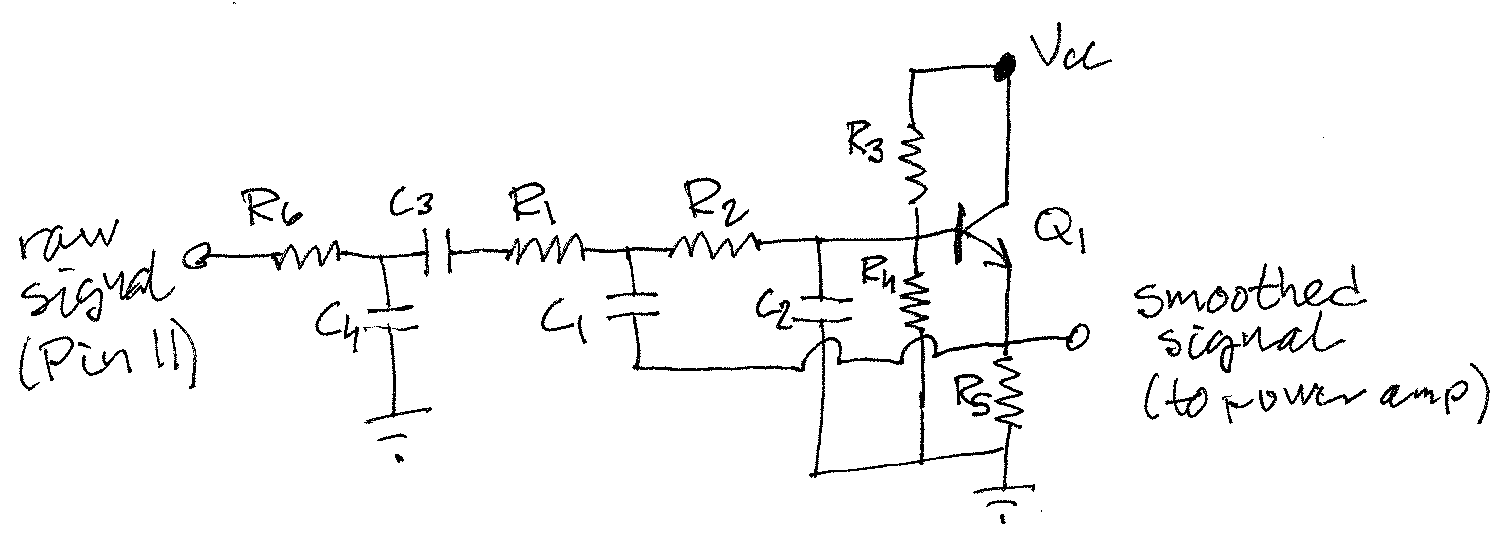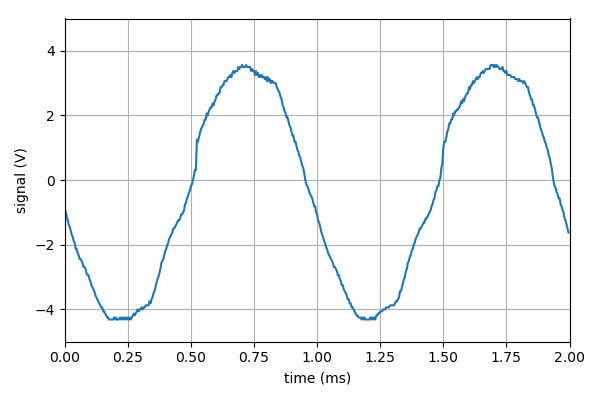I have not yet converged on a reasonable power amp for this project. This post is about the two options I've looked at so far. There's also a link to the first tech demo.
Power amp Mk0, no power amp!
That's right, the gain device used for the Sallen-Key low-pass filter is a single-BJT emitter follower (common-collector amplifier) that has output impedance low enough for the signal to directly drive an 8Ω speaker. So the filter does double duty also as a bargain-basement power amp.
As a reminder, here's the schematic:

By adding a single passive component, in the form of a 470μF coupling cap, to the smoothed-signal filter output, we get a signal capable of driving a speaker. The output is not terribly loud, but it's definitely audible. Here's what it sounds like.
This might be an acceptable budget option for a power amp, especially for driving 32Ω headphones.
Power amp Mk1, using LM386
To make my noise louder, with at least a watt into the speaker, I breadboarded the "typical application" schematic from the LM386 datasheet, using 12V supply voltage. With the filter on the same breadboard, everything was peachy. Here's the signal measured across the voice coil of the speaker:

About 8V peak-to-peak, but with some additional distortion compared to the filter output signal. I then migrated the filter to perfboard, but left the power amp on the breadboard, connecting the two with alligator leads:

This is what the signal now looks like:

OMG!1!! Kill it with fire! Severe asymmetric clipping, and 115 kHz noise due to the power amp being unstable. It fried my 32Ω speaker, which fortunately is a recycled headphone speaker cone in a laminated TP roll. The LM386 power amp might be salvageable. The datasheet does warn of long leads, so migrating the amp from breadboard to perfboard should help its stability. However, I was already having doubts about using an LM386 chip for this application. I had noticed that the output signal was pretty load dependent. That's not good because I want to be able to use any junk speaker and get more or less reproducible results. So I"ll think I'll cut my losses on the Mk1 (LM386-based) power amp.
Discussions
Become a Hackaday.io Member
Create an account to leave a comment. Already have an account? Log In.